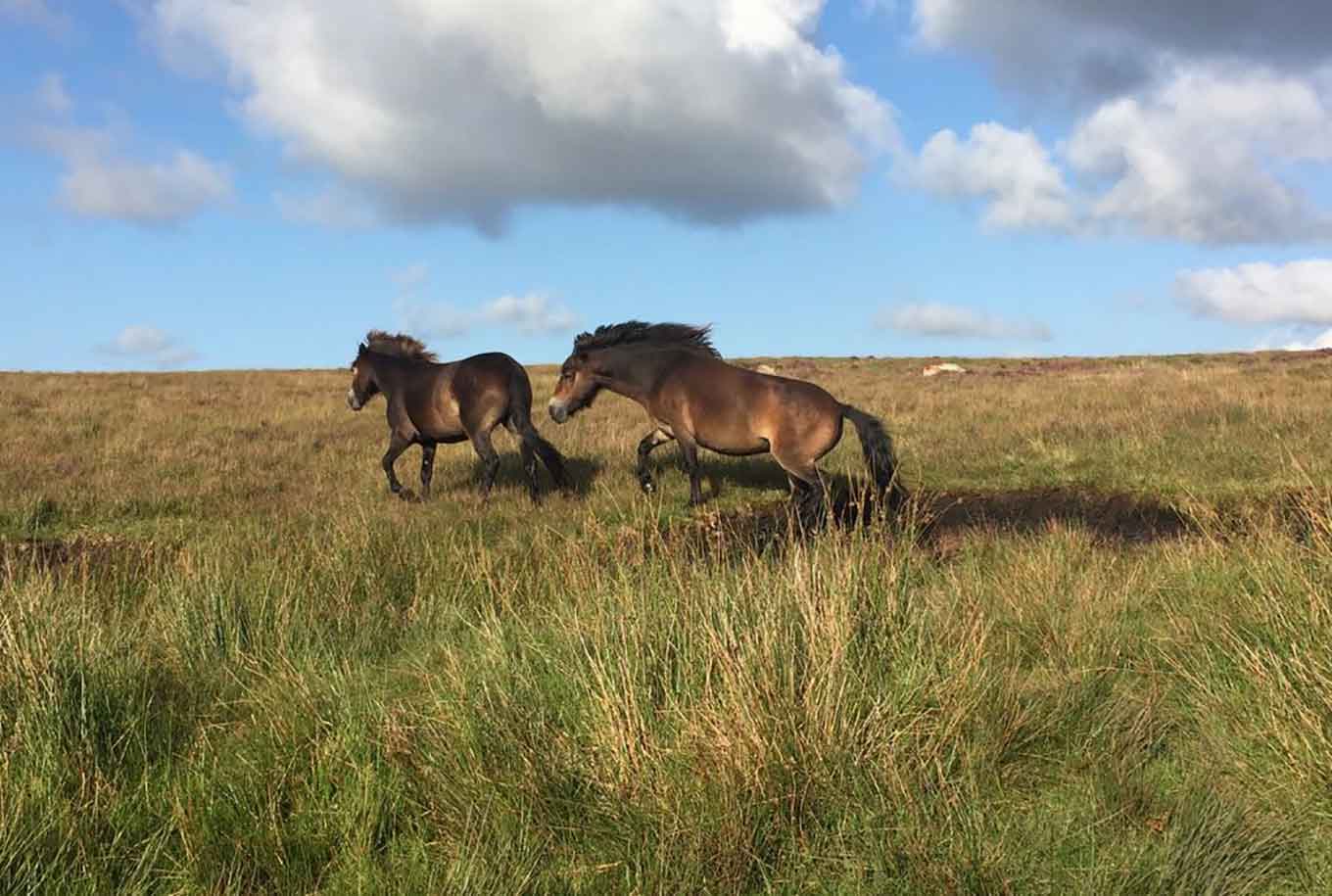Dartmoor

Dartmoor National Nature Reserves
Black-a-Tor Copse (NNR)
Black-a-Tor Copse is an area of woodland, granite clitter (rocks) and moorland 380 metres above sea level. The reserve is one of Britain's best examples of high altitude oak woodland and is nationally important for the variety of lichens and mosses that clothe the trees and rocks.
Black-a-Tor Copse is one of three high altitude woodlands on Dartmoor, offering views across the West Okement River Valley. English oak trees have grown through large granite boulders or 'clitter' to create a woodland which is nationally important for rare lichens and mosses.
The clean air and damp humid conditions of Dartmoor provide the perfect place for the lichens to thrive. As well as rare lichens such as Bryoria smithii, more common species including the beard lichen can also be spotted.
Twenty species of breeding birds have been recorded in the woodland and surrounding habitat, including ring ouzel and redstart.
The woodland isn't actively managed, but light grazing by the cattle, sheep and ponies that reside on the open moorland help sustain the open character and abundant lichens and mosses. The moorland is also periodically burnt in an ancient practice known as 'swaling'. This provides patches of more palatable grass for livestock in spring and reduces the spread of gorse and young trees.
East Dartmoor Woods and Heaths (NNR)
East Dartmoor consists of 3 joined but distinct areas: Yarner Wood, Trendlebere Down and the Bovey Valley Woodlands. Together they provide an excellent example of internationally important western oakwood with its associated bird and lower plant communities.
Look out for pied flycatchers, woodpeckers and wood warblers in the woods, Dartford warblers, ponies and fritillary butterflies around the moorland, and dippers along the River Bovey.
Wistman's Wood (NNR)
Wistman's Wood is a small upland oakwood in the valley of the West Dart River.
Wistman's Wood NNR is the most famous of 3 high altitude woodland copses on Dartmoor. The wood is surrounded by granite tors and moorland and the NNR is important for the mosses and lichens found on the site's trees and granite boulders.
The oldest trees are about 400 years old, with the woodland area doubling in size in the last 100 years.
The reserve was the site of one of the largest Bronze Age settlements in Dartmoor. The remains of almost 100 ancient buildings can be spotted.
Woodland birds such as redstart and spotted flycatcher can be seen in the wood in spring and summer, along with wheatear, stonechat and whinchat in open areas. Winter brings merlins, meadow pipits and skylarks. Short-eared owls and hen harrier can be seen on the darkest winter days.
Dendles Wood (NNR)
This is a hazardous site and for health and safety reasons public access is limited to permit holders.
Dendles Wood NNR is an area of upland oak-beech woodland located in a narrow gorge of the River Yealm. The woodland is rich in ferns, mosses and lichens.
The woodland is of particular scientific interest because it is a mixed oak-beech wood pasture which predates a large scale planting of beech in Devon in the sixteenth century. The beech is therefore assumed to be native at the edge of its natural range.
The typical damp conditions of upland Atlantic oak woods encourages a rich community of lichens and mosses. Breeding birds include redstart, wood warbler and pied flycatcher.
Seven species of bat have been found here including the nationally rare barbastelle bat which breeds here. There is a good population of the blue ground beetle which is a red data book species.
The best times to visit are from mid-April to mid-June for woodland birds and bluebells.
Dartmoor Postcode:
England > Devon > West Devon > Yelverton > Dartmoor
